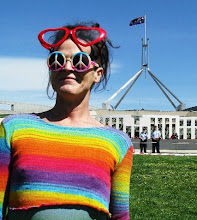Commentary: Census doesn't fairly count transgender persons | McClatchy
By Kalil Cohen | The Progressive Media Project
All the advertising I have seen for the 2010 census has a unified message: We must all participate so we can count. However, some of us will be participating in this census, but will not be accurately counted.
On the 2010 census home page is "Portraits of America," a collection of short videos from an array of racially diverse Americans, including many immigrants. The tagline to the video states: "Make sure your story is captured as we make a new portrait of the nation."
While I support the inclusion of communities of color in census data collection, I am dismayed to see that similar efforts are not being made to include gender-variant communities, meaning people who are not only "male" or "female." The 2010 census form collects information on age, sex, race, ethnicity and living arrangements. In 2000, the census form was finally altered to allow participants to identify with all their racial and ethnic groups rather than being forced to choose only one. This gave the government much more complex and accurate data regarding U.S. residents.
Similarly, there needs to be a way to self identify one's sex beyond "male" or "female" on the census forms.
Sex, like race, is a complex category.
A person's sex includes hormones, chromosomes, and physical features, which may not neatly align as either male or female. As we saw last fall with world-class runner Caster Semenya, athletic boards have difficulty sometimes classifying people as male or female.
The reality is that there are not only two sexes, but these are still the only two options on the 2010 census form. This leaves people who fall outside the categories of "male" or "female" unable to identify themselves on the census. This prevents transsexual, transgender, intersex and other gender-variant individuals from accurately being counted by the 2010 census.
It is important for these communities to be counted accurately by the census not only to give us a true picture of our nation but also to allow gender-variant individuals to access the programs they need. Those programs depend on federal funding, and that funding level depends on how many people are counted.
For instance, in Los Angeles there are medical and educational services for transgender individuals that should receive federal funding based on the number of gender-variant county residents, a number that will not be collected by the 2010 census. Without the ability to mark our sex accurately on the census form, we are rendered invisible. We do not, in fact, count.
This has got to change by the 2020 census.
ABOUT THE WRITER
Kalil Cohen is a writer for Progressive Media Project, a source of liberal commentary on domestic and international issues; it is affiliated with The Progressive magazine. Readers may write to the author at: Progressive Media Project, 409 East Main Street, Madison, Wis. 53703; e-mail: pmproj@progressive.org; Web site: www.progressive.org. For information on PMP's funding, please visit http://www.progressive.org/pmpabout.html#anchorsupport.
This article was prepared for The Progressive Media Project and is available to MCT subscribers. McClatchy-Tribune did not subsidize the writing of this column; the opinions are those of the writer and do not necessarily represent the views of McClatchy-Tribune or its editors.
© 2010, Kalil Cohen


0 Comments:
Post a Comment
<< Home